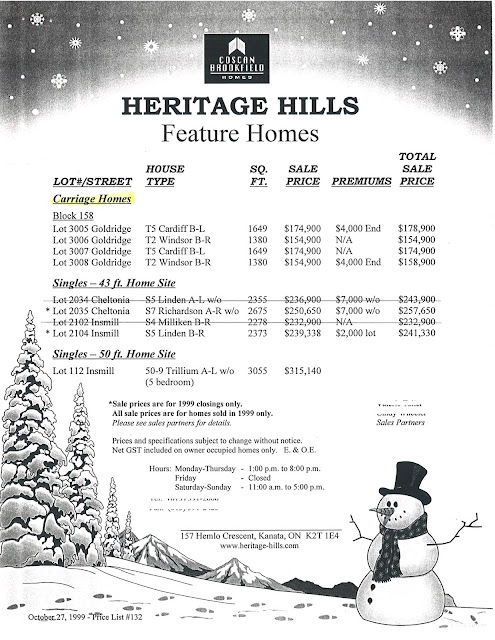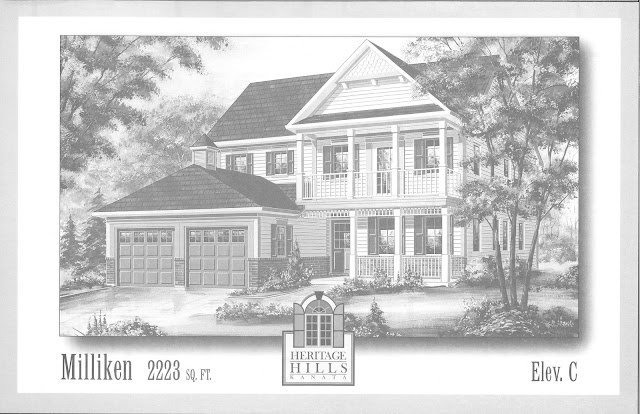It has been a while since I first embarked on a project to scan and post all of the Costain/Coscan plans that I have in my collection. This is the final installment from my collection of plans that were built in Ottawa by the builder.
These plans in particular were all printed as large fold-out brochures, making them tricky to scan - but I have done my best!
The "Look of New England" designs were built in the Fallingbrook area of Orleans and very few were actually built. The houses are quite narrow and have protruding garages, a common design of the time. In more recent years builders have shied away from these types of houses (sometimes called "snout houses"), in favour of houses where the garages are recessed in to the facade.
The "Look of New England" designs were built in the Fallingbrook area of Orleans and very few were actually built. The houses are quite narrow and have protruding garages, a common design of the time. In more recent years builders have shied away from these types of houses (sometimes called "snout houses"), in favour of houses where the garages are recessed in to the facade.
First introduced in the early 1970s, the ForestWood Collection took on many incarnations over the years. Here are the most recent plans (c. 1999) in the collection built by Costain before they ceased operations in Ottawa. These were built in Fallingbrook.
The Heritage Hills neighbourhood in Kanata was the last project Coscan built in Ottawa:
The Carriage Homes in Heritage Hills are a modern take on the linked townhouses first built by Costain in the 1970s in Blackburn Hamlet and Convent Glen.
After the millennium Coscan ceased operations in Ottawa, although I am not sure why. The company continues to build in the Toronto area under the name Brookfield Homes, and is part of a larger company that builds across North America.

















































































































Do you have more Regional floor plans? Trying to determine the original layout of our home on Bordeau Grove in Orleans
ReplyDeleteI do have more Regional plans. I will dig them up and work on a post in the coming days!
Delete~Saul
Do you happen to have blueprints for coscan Richardson built in heritage hills or how to find them? Would like to know if the pillars in the porch are load bearing. Thanks!
ReplyDeleteHi there. Blueprints are hard to find as they are typically disposed of once a development is completed. I would suggest contacting the building department at the City of Ottawa to see if they still have a copy on file from when the building permit was originally given to Coscan. I know that some municipalities keep them on file, so it is worth a try!
DeleteTake care,
Saul
Here's a longshot question. Any idea where the Coscan Homes sales office / model homes were in Fallingbrook? A friend came across an old photo that had it in the background, and we're trying to figure out where it was. Thanks!
ReplyDeleteFrom what I can tell from that marketing material that I have, it looks like there was a sales office/model home at the SE corner of Northlands and Valin at one point. There were probably other locations as Coscan built in the area for a number of years.
Delete